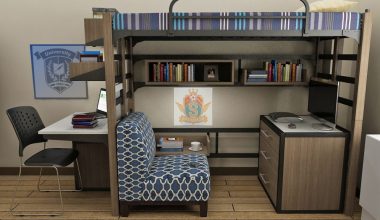T-Levels are technical qualifications introduced in the United Kingdom to offer students a viable alternative to A-Levels and apprenticeships. They are designed to equip students with the skills and knowledge needed for specific industries and careers.
But when do T-Levels start and finish? This comprehensive guide will delve into the details of T-Levels, their structure, duration, and what students can expect from this exciting educational pathway.
Table of contents
- What are T-Levels?
- How Do T Levels Work?
- Why Should I Go for T Levels?
- What Subjects Are Covered In T Levels?
- What’s the Duration of T-Levels?
- How Do T Levels Compare To Other Degrees?
- When Do T-Levels Start and Finish?
- How Is T Levels Structured?
- How the T Levels were created
- What Distinguishes T Levels from Apprenticeships?
- FAQs
- Conclusion
- References
- Recommendations
What are T-Levels?
T-Levels, short for Technical Levels, are a new qualification introduced by the British government as a part of the ongoing reforms within the education system. These qualifications offer an alternative pathway to traditional A-Levels and focus on providing students with hands-on practical skills in specific industry sectors.
T-Levels have been developed in collaboration with employers and aim to bridge the gap between education and employment by offering students a clear route into skilled employment or further study.
With 25 different subjects available across various industries, including health and science, construction, digital technology, and many more, T-Levels provide a wide range of options for students to pursue their interests and develop expertise in areas with high demand for skilled workers.
How Do T Levels Work?
With the introduction of T Levels in England in September 2020, technical education will take on a new direction. T Levels were created as an alternative to A-levels and apprenticeships to bridge the academic and professional paths. These two-year programs offer students the chance to gain academic knowledge and practical skills by combining classroom instruction with on-the-job training.
The emphasis placed on industrial relevance in T Levels sets them apart. To ensure that the courses match the demands of the labor market, they were developed in consultation with employers.
Because of this close alignment with sectors, T-level graduates will have the modern skills employers seek, improving their chances of finding employment after their studies.
Each T Level has a sizable work placement component that enables students to apply their knowledge in authentic settings.
The emphasis on progression pathways is yet another crucial component of T Levels. T Levels offer obvious entry points into higher level qualifications or work prospects, in contrast to typical technical education credentials that frequently restrict students’ options for additional study or specialization.
After completing a T-level program, individuals can continue to advance their skills and knowledge by enrolling in higher-level technical courses at universities and colleges.
Read ALSO: Is Medicine Career a STEM Degree?
Why Should I Go for T Levels?
T-Levels offer a distinctive blend of practical skills, industry applicability, and academic understanding, making them a wise choice for many reasons. Here are some reasons why you should go for T levels:
Employers and industry professionals collaborated on the creation of T-Levels. By doing this, you can be confident that the knowledge and skills you acquire align with the labor market demands. T-Levels are a useful and efficient approach to preparing for a certain vocation.
Job-based Learning
The significant job placement component of T-Levels is one of its unique aspects. This enables you to use what you learn in a genuine workplace setting. Practical experience can help you easily transfer into the workforce and make you more appealing to employers.
RECOMMENDED: What are the T-Level Entry Requirements?
Clear Career Path
T-Levels are well-structured and offer a direct route to a certain industry or career. If you have a specific job in mind, t-Levels can provide you with the specialized training and credentials you need to enter a certain sector.
T-Levels are a viable alternative to A-Levels and other standard academic courses. They offer services to pupils with various educational interests and objectives. T-Levels might be the best option if you prefer a more hands-on, career-focused approach to education.
Completing a T-Level program, which is academically challenging, is equivalent to earning three A-Levels. Therefore, T-Levels offer a significant qualification that both colleges and companies value.
While T-Levels are meant to prepare you for the workforce, they also allow you to attend university. For T-Level graduates, many universities provide specialized admission routes. If your work ambitions are compatible with higher education, you can pursue it.
Holistic Learning
T-Levels offer a well-rounded education combining fundamental information, specialized knowledge, and practical experience. With this comprehensive approach, you are certain to possess both technical expertise and a wide understanding of the sector.
Employment prospects
T-Levels are made to improve your employment prospects. Employers frequently place a high importance on relevant experience and training. You can be a more competitive applicant on the job market if you have a T-Level qualification.
Personal Development
T-levels can aid in developing critical soft skills like communication, problem-solving, teamwork, adaptability, and technical skills. Any profession will value having these skills.
You may want to see the T Levels vs A Levels: Are T Levels Harder than A Levels
What Subjects Are Covered In T Levels?
You can currently study T Levels in:
- accounting
- agriculture, land management and production
- building services engineering for construction
- design and development for engineering and manufacturing
- design, surveying and planning for construction
- digital business services
- digital production, design and development
- digital support services
- education and early years
- engineering, manufacturing, processing and control
- finance
- health
- healthcare science
- legal services
- management and administration
- maintenance, installation and repair for engineering and manufacturing
- onsite construction
- science.
From September 2024, T Levels will also be available in:
- animal care and management
- catering
- craft and design
- hairdressing, barbering and beauty therapy
- media, broadcasting and production
- marketing.
Read ALSO: Which Year Do You Do Your A-Levels?
What’s the Duration of T-Levels?
T-Levels last for two years. Most T-Level students finish their work within this time frame; however, if they cannot finish everything or wish to improve their results, some repeat a year or retake the course.
The bulk of the T-Level, or the technical qualification, lasts about 1200 hours. It is divided into a core component (with two tests) and a project the employer requires. The occupational expert component also has a significant job to finish.
During your first year of T-Level coursework, you will work on the core component and occupational specialization work. In the core component, you will take some tests.
You will work on the last pieces of your core work throughout the second year. You can also finish the project assigned by your employer or an occupational project and retake exams from the previous year if necessary.
Most of your time will be spent on this. The qualification includes an industry placement as well.
How Do T Levels Compare To Other Degrees?
The new technical qualifications known as T Levels established in England give students the academic knowledge and practical skills necessary for various industries. But how does T Levels compare to other degrees?
First, it’s crucial to remember that T Levels can immediately lead to higher education and are equivalent to A Levels regarding UCAS points. As a result, T-level graduates have the same opportunity to continue their education at a university as their colleagues with more traditional academic credentials.
T Levels, on the other hand, stand out due to their emphasis on professional development and job experience. T Levels emphasize developing industry-specific skills through a combination of classroom instruction and industrial placements more than A Levels, which primarily prepare students for further academic study.
Because of this, T Levels greatly complement other practical degrees like BTECs or apprenticeships. Many students opt to complete a T Level in addition to an apprenticeship or combine it with other qualification courses that align with their professional objectives.
Combining T Levels with other qualifications provides a wide range of choices for students looking for multiple pathways into higher education or the workforce.
It dispels the idea that there is just one appropriate path after completing secondary education—a strictly academic one—by valuing experiential learning and developing skills relevant to the workforce.
With this flexibility, people may customize their educational experience to fit their interests and objectives while obtaining a well-rounded set of credentials that employers highly seek in various industries.
READ ALSO: Do Universities Accept BTECs?
When Do T-Levels Start and Finish?
The new technical credentials known as T-Levels will be offered to post-16 pupils in England starting in September 2020. The exam starts in September, usually at the same time as A-Levels. This is around the first few weeks of September. However, this time frame is solely dependent on your specific school. They usually take around 2 academic years, and end in May-July of your second year. This prolonged period gives students enough time to finish their coursework assignments and take advantage of the industrial placement component’s opportunity to get practical experience.
This two-year program will be offered in various subject areas, including construction, digital technology, health, and science, and is intended to fill the educational gap between A-levels and practical studies.
Through classroom instruction and industry placements, t-Levels aim to equip students with the skills and knowledge required for particular industries.
Read ALSO: How To Make A-Level Revision Timetable (That Actually Works)
How Is T Levels Structured?
The T Levels exam is structured to give students a thorough and useful education in the topic of their choice. The exam requires students to undertake both a technical qualification and an industry placement with an employer.
Students are also required to work towards the attainment of maths and English if they have not already achieved grade 4 at GCSE, as students do in other 16 to 19 programs. However, T Level students are no longer required to achieve either a grade 4 in English and maths GCSE or level 2 in functional skills to pass their program.
The exam usually contains topics like English, math, computer skills, and personal development, which serve as its core. These topics are crucial for developing well-rounded people who excel in their chosen vocation and other aspects of life.
Additionally, the core curriculum guarantees graduates a solid grasp of the fundamental abilities needed across various industries.
Finally, a T Level’s structure includes core material that establishes a solid foundation in fundamental subjects like English and mathematics, specialist material that offers in-depth knowledge specific to a chosen industry, and an industry placement that enables students to gain practical experience in actual workplace settings.
Read Also: Are Online A-Levels Accepted by Universities in US and UK?
How the T Levels were created
Each T Level now offered or in development was created in collaboration with employers, businesses, and the Department for Education.
To equip students with the necessary abilities for the profession, T Levels are created with the demands of the various industries in mind.
They are created utilizing employer input and authorized by the Institute for Apprenticeships and Technical Education. They are based on the same requirements as apprenticeships.
T Level Panels have developed each technical education course offered as a T Level comprised of employers, educators, and professional groups.
The DfE’s employer engagement teams collaborate with employers to help them provide internship opportunities. Additionally, providers are supposed to assist companies so they may place T-level students.
What Distinguishes T Levels from Apprenticeships?
Both T Levels and apprenticeships are possibilities for practical education that offer alternatives to conventional academic paths. However, they are distinguished from one another by a few key distinctions.
Apprenticeships prioritize on-the-job training with part-time or full-time classroom instruction, unlike T Levels, which emphasize classroom learning with a significant work placement component.
The programs’ durations are a key point of difference. T Levels often cover a wide range of disciplines within a particular industry and continue for two years, giving students a strong foundation in their field of study.
The length of an apprenticeship may range from one to six years, depending on the degree and complexity of the credential.
The assessment framework is another significant distinction. T Levels use formal exams and practical assessments to check students’ skills and knowledge at predetermined points throughout the curriculum.
Apprenticeships place a greater emphasis on ongoing evaluation based on workplace projects and evidence-building portfolios built over time.
Read ALSO: What A-Levels Do You Need to Become a Lawyer?
FAQs
T-Levels are scheduled to be introduced in September 2020.
T-Levels typically last for two years, equivalent to a full-time study program.
The first T-Level qualifications will be awarded in the summer of 2022.
Universities have committed to accepting T-Level qualifications as an alternative route into higher education alongside A-levels and other Level 3 qualifications.
Yes, it is planned for additional subjects to be gradually added over time to provide a broader range of options within the T-Level framework.
Initially, a limited range of subjects will be available under the T-Level program, including Digital Production, design, and Health and science.
Conclusion
While T Levels and apprenticeships offer worthwhile possibilities for vocational training, they have substantial differences in delivery and assessment. The decision between these two possibilities depends on the preferred program length and individual preferences regarding classroom versus practical learning. Prospective students can choose the track that best fits their career goals and learning style by being aware of these important characteristics.



